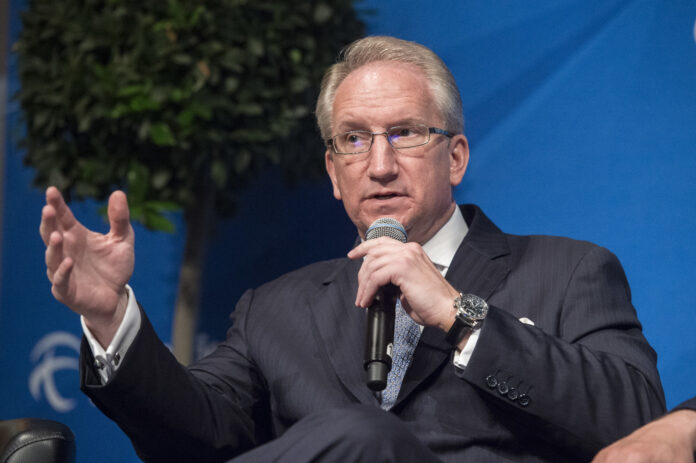The proposed tariffs recommended by former president and Republican presidential nominee Donald Trump could “change the landscape for the future” of the Port of Los Angeles, the port’s executive director Gene Seroka said recently during the monthly presentation of port volumes.
Should he be re-elected this November, Trump is proposing a 10% tariff across all imported goods and a 60% tariff on goods from China for the more than US$3 trillion worth of goods coming into the United States, according to Seroka.
Despite this prospect, the port of LA has been “pretty nimble” after Trump first issued tariffs on Chinese goods in the spring of 2018 when he was in office, Seroka said.
Since that time, the Californian port has been seeking to diversify its business portfolio. When 2022 ended, 57% of the port’s business portfolio was related to China. By the end of 2023, that portion fell to 53% and now, in the midpoint of 2024, that percentage is in the low-to-mid 40s.
“That means that we picked up traction in Southeast and South Asian nations, and we’ve done more for cross-border activity in and out of Mexico and the manufacturing and retail communities there. We’ll continue to do just that,” Seroka said.
Should additional tariffs be enacted, overall North American port volumes may stay fairly consistent and rise and fall according to macroeconomic factors such as consumer demand. However, like the port of LA, North American ports could see a change in the mix of originations as shippers continue to diversify their sourcing and seek out manufacturing in countries beyond China, such as South and Souteast Asia, Mexico and Central America.
Matt Priest, president and CEO of Footwear Distributors and Retailers of America, echoed Seroka’s remarks as a guest of the port’s July 17 media briefing. Because footwear is largely imported, with over 90% of volume coming from China, Vietnam and Indonesia, the industry is keeping an eye on any proposed import tariffs, especially those proposed by Trump. The American footwear industry pays about US$4 billion a year in tariffs and imports 2.5 billion pairs of shoes every year, according to Priest.
“The former president is putting out a lot of proposals that would fundamentally alter the approach to trade, or at least continue the trends that he put forward in his first term. So, we now have a record of policy decisions behind us to help inform us on how to best navigate that scenario for us as an industry,” pointed out Priest.
The footwear industry may not be perceived as a critical industry, but it will still lobby Congress and whoever is elected in November so that politicians can understand that the tariffs could ultimately lead to higher prices for consumers, Priest said. He also expects continued discussion about shifting more production from China to other countries.
Although the November elections are months away, the possibility that Trump could be elected is prompting the footwear industry and other industries to ship goods ahead of time before any would-be tariffs kick in.
But even actions by the existing presidential administration are helping to drive import volumes. After President Joe Biden’s tariffs on certain imported goods were announced in May, including a 100% tariff on electric vehicles from China, importers have been ramping up activity before the tariffs go into effect, according to Priest.
Seroka echoed Priest’s remarks. American importers and exporters are seeking to bring in product earlier ahead of tariffs and as a hedge against geopolitical instabilities, and they want to ensure that they don’t run into a space crunch, Seroka said.
“We’d like to see these prices come down because they are an important component of the overall US consumer thought process and that landed price. But realistically speaking, with reports of congestion in Singapore, because timing is so far off on a lot of these ships, you’re going to see prices stay elevated for some time,” added LA port boss.
That said, about 90% of all business in the Transpacific market is contracted on an annual basis, so the spot market is a relatively small percentage of the trade, Seroka noted.
“What we don’t know, and what was witnessed during Covid is, once a contract holder surpasses their minimum quantity commitment to ship, do they go into an environment of spot rates, or can they continue on, possibly through renegotiation or with their current contracted prices? That’s why we watch this space so much,” Seroka said.







